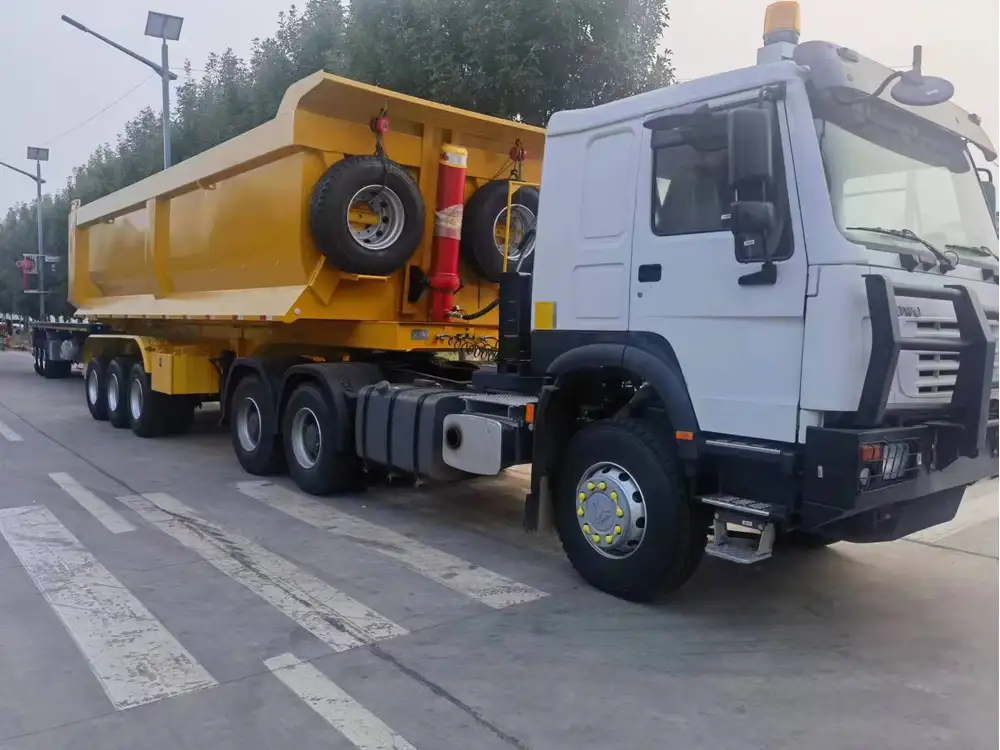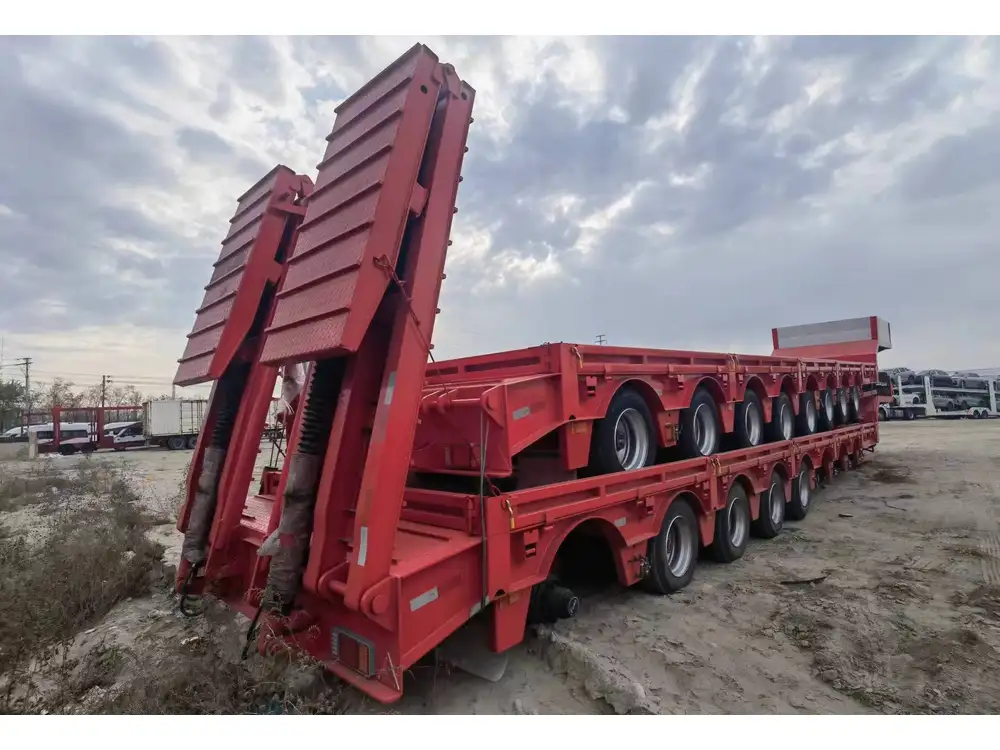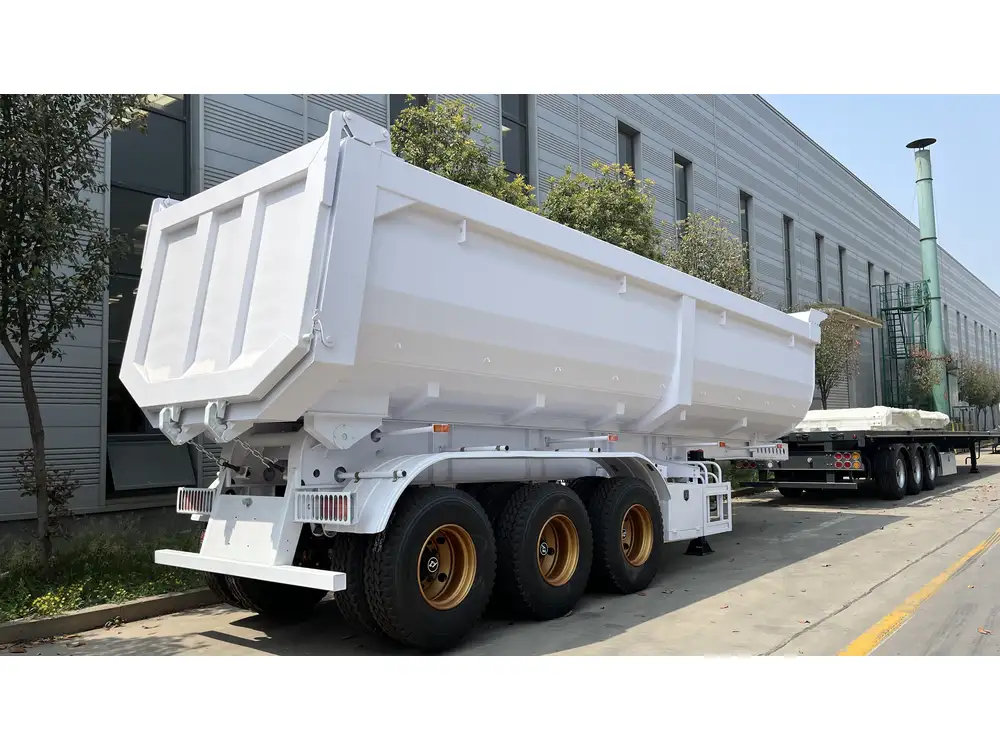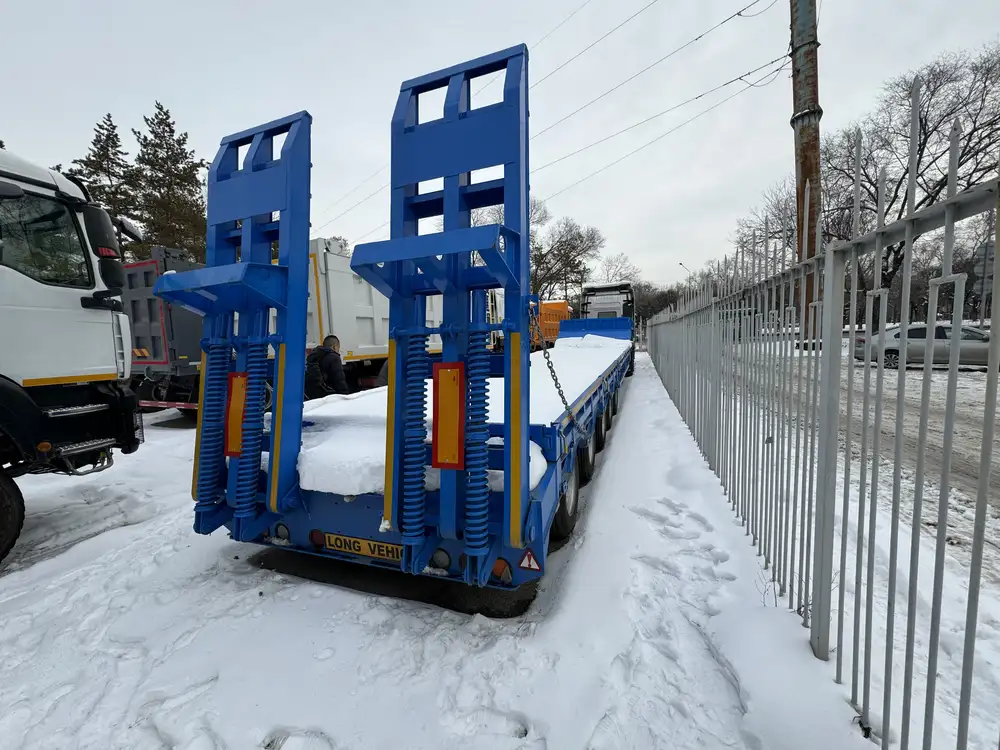Transporting vehicles safely is essential, and understanding how to secure a car on a flatbed trailer can significantly enhance safety and prevent damage. This step-by-step guide not only delves into the best practices for securing a car on a flatbed trailer but also provides insights into tools, techniques, and vital considerations that every transport operator or car owner should be aware of.
Understanding Flatbed Trailers
Before diving into securing vehicles, it’s crucial to comprehend what flatbed trailers are. Flatbed trailers are versatile platforms with no sides or roof, often utilized for hauling lumber, machinery, and vehicles, including cars. Their open design offers a straightforward loading and unloading process but necessitates proper securing techniques to prevent accidents.
Types of Flatbed Trailers
| Type of Trailer | Description | Best Use Cases |
|---|---|---|
| Standard Flatbed | Basic flat platform, no sides, accommodates most vehicles | General hauling, cars, equipment |
| Low-Loader Flatbed | Lower to the ground for easy loading | Transporting low-profile vehicles |
| Tilt-Bed Trailer | Trailer bed tilts to the ground, facilitating loading | Equipment that requires gradual loading |
| Step-Deck Trailer | Upper deck for taller loads with lower main deck | Tall machinery and vehicles |

Preparing for Vehicle Transport
1. Equipment Checklist
Before loading the car, gathering the necessary tools is vital. Here’s a list to ensure you have everything you need:
- Ratchet Straps: Strong, durable straps for tying down the car securely.
- Wheel Chocks: Prevents movement of the vehicle during transport.
- Dunnage: Wooden or rubber blocks used to stabilize loose parts.
- Gloves: To protect your hands while handling equipment.
- Ramps: For smooth loading and unloading of vehicles.
- Winch: In case of a non-working vehicle that needs to be pulled onto the trailer.
2. Inspecting the Flatbed Trailer
Before loading, inspect the flatbed trailer for any signs of wear or damage. Check the following components:
- Tires: Ensure they are properly inflated and in good condition.
- Straps & Ratchets: Look for fraying or damage.
- Base: Ensure the surface is free from debris and damage.

Loading Procedures
1. Positioning the Vehicle
Align the car with the trailer’s loading area. For vehicles with low ground clearance, it’s ideal to:
- Position the car straight, ensuring the tires are centered on the trailer.
- Use ramps for vehicles too low to the ground for a direct load.
2. Using Ramps
Ensure the ramps are securely attached and stable. Follow these guidelines during loading:
- Secure Connection: Make sure ramps are firmly connected to both the trailer and the vehicle.
- Steady Approach: Drive the vehicle slowly up the ramps, maintaining a steady pace to prevent slipping.

Securing the Vehicle
1. Using Ratchet Straps
Once the vehicle is on the flatbed, securing it with ratchet straps is the most common method. Follow these steps:
- Attach Hooks: Connect the hooks of the ratchet straps to the designated secure points on the vehicle (usually found on the chassis).
- Cross Pattern: For added stability, use a cross pattern when strapping down. This method secures the vehicle from moving front to back and side to side.
2. Wheel Chocks Utilization
Position wheel chocks in front of and behind the rear wheels:
- Front Chocks: Prevent the vehicle from rolling backward.
- Rear Chocks: Protect against forward movement during transport.

3. Effective Securement Techniques
- Tighten Ratchet Straps: Ensure that the ratchet straps are tight but not excessively so to prevent damage to the vehicle’s suspension.
- Double Check: After securing, give the straps a firm tug to check for any looseness.
Example of Ratchet Strapping Techniques:
- Direct Tie-Down: Attach the straps directly from the trailer to the vehicle at four points.
- Diagonal Tie-Down: This involves a cross method, linking straps from one side to the opposite anchor point.
| Strap Configuration | Advantages | Disadvantages |
|---|---|---|
| Direct Tie-Down | Straightforward and quick | Less stability on uneven surfaces |
| Diagonal Tie-Down | Greater stability and security | More time-consuming to set up |
4. Regular Checks During Transport
Once the vehicle is secured and in transit, conduct regular checks to ensure everything remains in place:
- Stop periodically (every 50 miles or so) to inspect strap tension and overall security.
- Adjust as necessary to counteract shifting due to vehicle movement or road conditions.
Legal Considerations

1. Compliance with Regulations
When transporting vehicles, awareness of legal obligations is crucial. Check local laws including:
- Weight Limits: Ensure the trailer is loaded within federal and state weight limits.
- Licensing: Additional licensing or permits may be needed for oversized loads.
2. Insurance
Secure appropriate insurance coverage for the transport period. This may involve:
- Vehicle Transit Insurance: Coverage specifically for vehicles in transit to protect against damage.
- General Cargo Insurance: For broader transport activities, including potential damages to freight.
Common Mistakes to Avoid

1. Underestimating Load Security
Fails to properly secure the vehicle is a significant mistake. Ensure the following:
- Use adequate equipment designed for the weight and type of vehicle.
- Avoid over-tightening, which could damage the vehicle’s undercarriage.
2. Neglecting Equipment Maintenance
Regularly maintaining equipment, including straps and the flatbed trailer itself, is essential. Ensure:
- Routine inspections are conducted to catch wear and tear before loading.
- Replace any frayed or worn items immediately.
3. Ignoring Environmental Factors
Weather conditions can affect how vehicles should be transported:
- Wet Conditions: Be particularly cautious; use non-slip ramps and ensure added tension on straps.
- Windy Conditions: Monitor for wind gusts that may shift the load during transport.

Conclusion: Best Practices for Successful Vehicle Transport
Securing a vehicle on a flatbed trailer is a vital process that demands attention to detail, preparation, and understanding of best practices. By following the outlined steps— selecting the right equipment, performing systematic inspections, and employing proper loading and securing techniques—one can transport vehicles safely and effectively.
Summary of Key Steps:
- Gather necessary equipment and performing equipment checks.
- Load the vehicle correctly and plate securely.
- Utilize the right strapping and chocking techniques to prevent movement.
- Conduct regular checks and ensure compliance with legal regulations.
By adhering to these guidelines and remaining educated about the latest equipment and methods, transport operators and vehicle owners can greatly enhance the safety and efficiency of their vehicle transportation endeavors. Always prioritize safety and attention to detail for optimal results.



